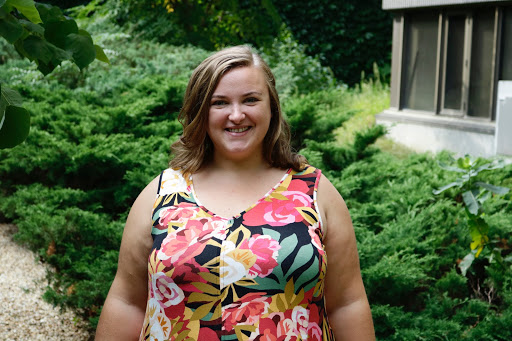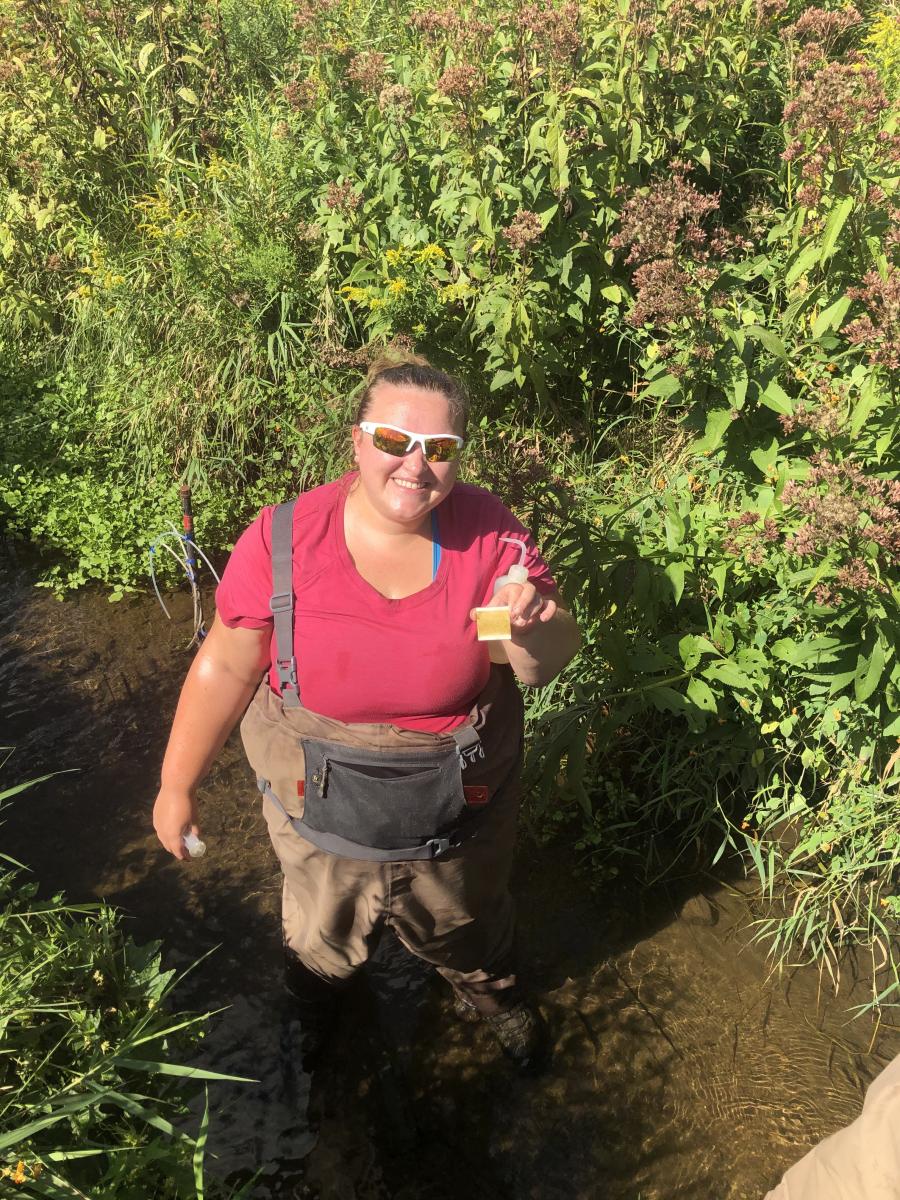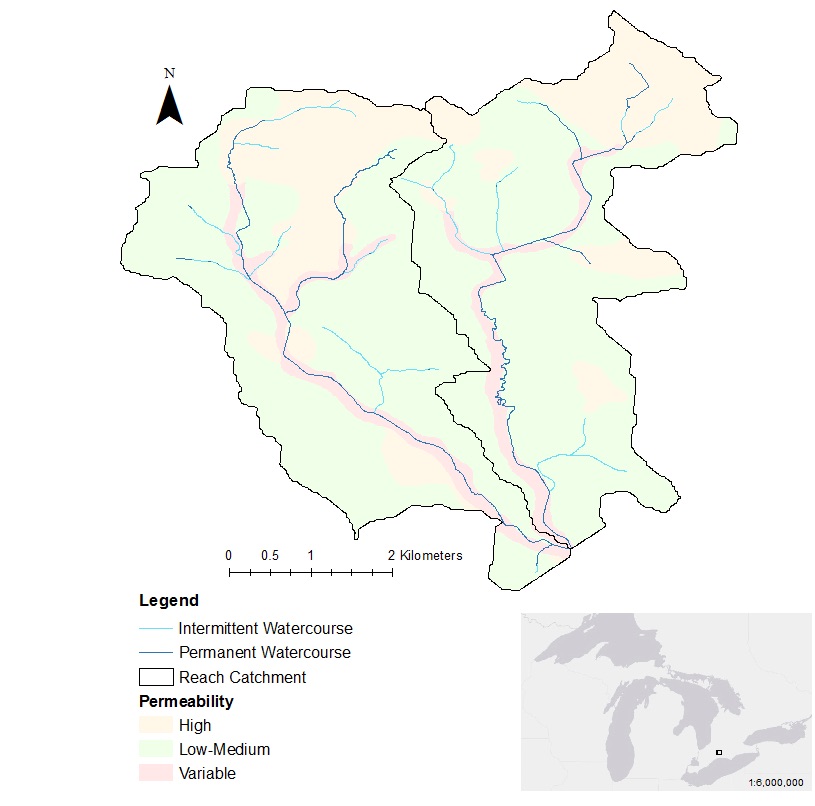We’re so excited to present to you the first of many student highlights through the Headwaters blog! Today we are highlighting the wonderful Lauren Banks (she/her/hers). She’s currently a second year PhD candidate working with Dr. Adam G. Yates at the University of Waterloo.

We asked Lauren to share her personal experience, from getting interested and involved in freshwater science, through to her current PhD research. Here’s what she had to say:
As a former indoor kid who spent all my time playing video games, watching television, or being on our family computer, I came to appreciate spending time in the woods and on a lake at my parent’s cabin in my early 20s. I began canoeing and going for walks in the forest and started to wonder about what I was seeing. What plant is this? What is beneath the surface of the lake? I found my answers through academics and through spending time outdoors.This general curiosity led me to work with wildlife, on honeybee nutrition, and organic agricultural practices, and eventually to agricultural wetlands. This work was my first contribution to a peer-review article, and I am so grateful to have had this experience as my introduction to freshwater ecology (Lieske et al 2017).
I also love identification, getting to stare at beautiful flora and fauna, and knowing ‘who’ they are immensely satisfying. A project with the combination of freshwater ecology and aquatic plant identification led me to my MSc work on the role of biodiversity and environmental conditions on aquatic plant decomposition dynamics using a stoichiometric (C:N:P) lens in lakes (Banks & Frost 2017). After my MSc, I felt I wanted my work to have a direct application beyond knowledge generation, so I spent over 2 years working in Cambodia and Malaysia for an INGO called WorldFish, doing research on impact of community-based fisheries in the Mekong River and developing solutions to improve environmental sustainability of aquaculture production in developing nations (Henriksson et al 2019, Tran et al 2020). Working abroad and researching ‘wicked’ problems has expanded my understanding of how to integrate research and application, and ignited a desire to ensure my future research career incorporates global partnerships in my approach to freshwater research. However, I found that working with qualitative data was not as natural for me as quantitative data, and wanted to shift back to answering ecologic, rather than environmental-economic, questions.
It was kismet when I saw an advertisement on the Canadian Rivers Institute Facebook page for a PhD position in Dr. Adam Yates’ StrEAMS Lab, and I found myself back in Canada working in yet another new-to-me freshwater ecosystem. Before my PhD, I hadn’t even taken a course in stream ecology. It’s been a lot of fun, and effort, to learn the ‘fundamentals’ of stream ecology, and I’m really enjoying working in a growing lab. Though switching fields means learning theory and methods from scratch every time, I find I’m able to take a more interdisciplinary approach in my research, and I have come to appreciate having diverse experiences in freshwater ecology research.

My current work focuses on how spatial heterogeneity in environmental conditions, such as water temperature, velocity, and chemistry, affects stream biofilm structure and function over spatial and temporal scales. My sites are in streams in Kintore, Southwestern Ontario, Canada, a highly agricultural area with riparian zones of low lying grasses, shrubs, mature and immature trees. For this work, I define structure as diatom community composition, stream biofilm ash-free dry mass [AFDM] and chlorophyll-a [chl-a], and define function as organic matter breakdown and respiration. A variable not commonly measured in stream biofilm research is groundwater. Groundwater inputs can influence water temperature, creating cooler conditions in summer and warmer conditions in winter, and can create local subsites of nutrients and organic matter. My research is a multi-scale (segment, reach, and microhabitat, and 4 season) evaluation of the impact of groundwater on stream biofilm structure and function. The work I did just this last summer and will be sharing on the Insta takeover this week is focused on the microhabitat-scale.

We chose a reach that has variable permeability in the sediment, and did some preliminary work to determine that there is groundwater flux (input and output) in that reach. Our collaborators measured streambed temperature transects, which we use as a proxy for groundwater flux.

I used their streambed temperature mapping to select 50 sites, which covered the range of streambed temperature. I then deployed my artificial substrates to grow stream biofilms, and in-stream and buried cotton strip assay (Tiegs et al 2013) at each site. The artificial substrates consist of 3 ceramic tiles, each for diatom community composition, stream AFDM, and chl-a. I measured tensile loss and respiration for both in-stream and buried cotton strips. We also measured PAR, flow, surface water nutrients and chemistry. Our collaborators also measured streambed temperature and nutrients at different depths in the sediment. Additionally, they did a geophysical survey to create a highly accurate 1 meter sediment profile.
My study applies a hierarchical experimental design that will be the first to simultaneously link multi-scale patterns in groundwater flux and stream biofilm heterogeneity. My work will provide new knowledge on spatial and temporal linkages between stream biofilm heterogeneity and groundwater flux in agricultural landscapes. Further, my research will inform future work providing fundamental information on the extent algal communities differ between areas of groundwater flux, and the role of habitat (i.e. riffle, run, pool) type in mediating these effects.
The outcome of my research will provide insights on ecological impacts of groundwater at multiple scales in agricultural streams, allowing for new modelling approaches and techniques to be developed, and ensuring Canadian inland waters are protected as agriculture intensifies and climate changes.

Even today, in the midst of my PhD, I still hold on to my inner indoor kid, and love to watch television (especially reality tv) and keep up with popular culture, interests I haven't found common among ecologists. But now that I’ve grown up, I have developed the part of me that loves to explore the outdoors, especially near water, and enjoy conducting my research primarily ‘in the field’.
As a final thought, to become an ecologist, you don’t ‘always’ have to have loved being outside or have ‘always’ been passionate about your specific field of study. All it takes is curiosity and interest, and the rest can happen over time with the help of inspiring mentors and supportive colleagues.
Lauren is @RealityLauren on Twitter and can be reached at this email: laurenkbnks@gmail.com

